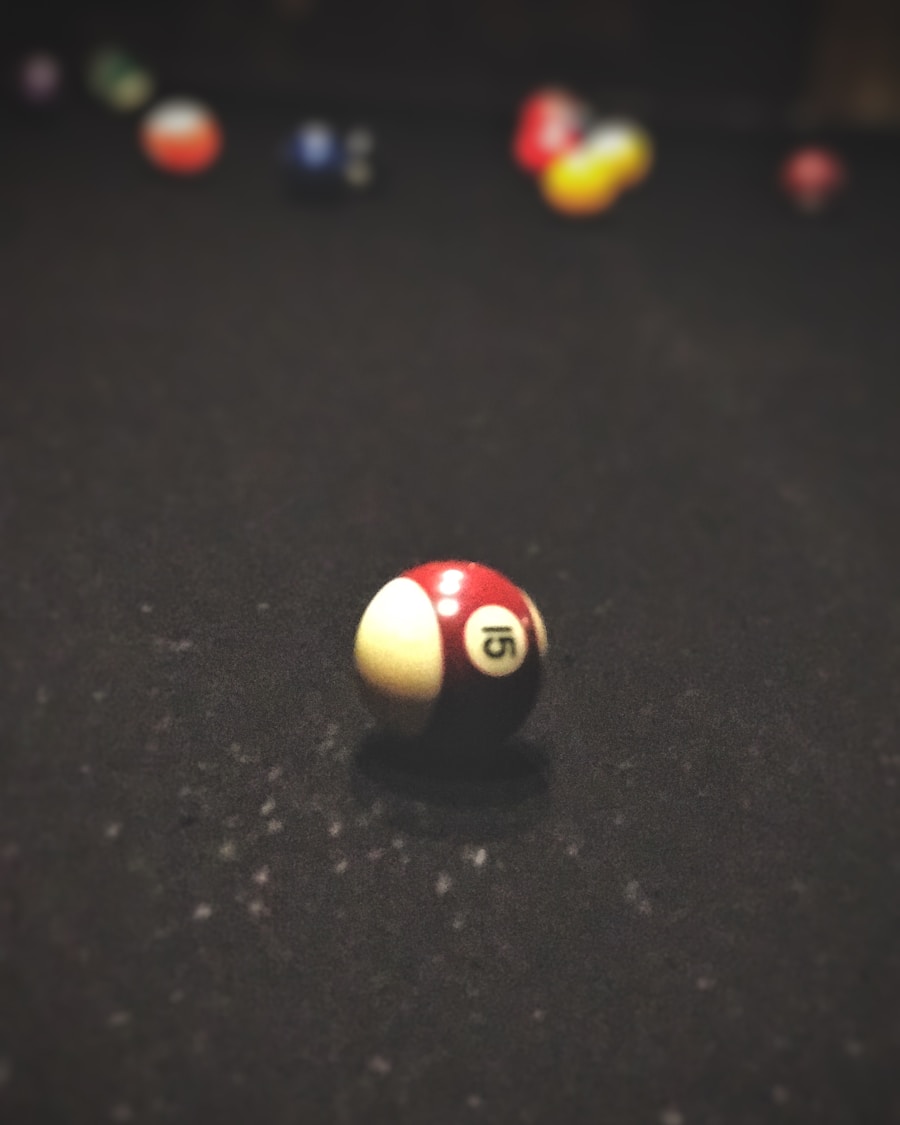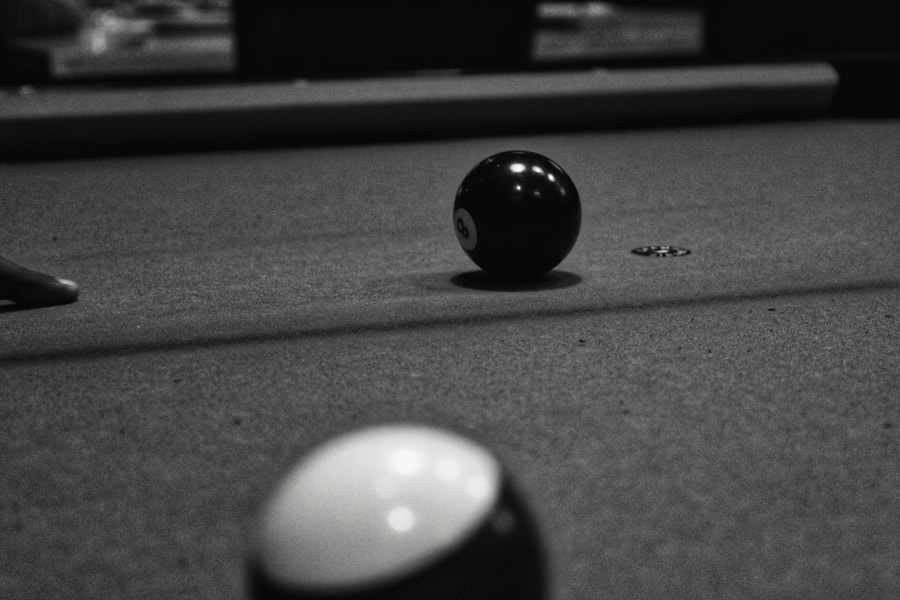Download links
How to install Mastering the Snake 8 Ball Pool: Tips and Tricks APK?
1. Tap the downloaded Mastering the Snake 8 Ball Pool: Tips and Tricks APK file.
2. Touch install.
3. Follow the steps on the screen.
Description
To truly appreciate the intricacies of billiards, one must first grasp the fundamental rules and objectives that govern the game. Billiards, in its various forms, is played on a rectangular table covered with a green felt surface, featuring six pockets into which players aim to sink balls. The most common variations include eight-ball, nine-ball, and straight pool, each with its own set of rules and strategies.
In eight-ball, players must pocket either the solid or striped balls before sinking the eight ball to win. Nine-ball, on the other hand, requires players to hit the lowest numbered ball on the table first, with the objective of pocketing the nine ball last. Straight pool allows for more freedom in shot selection, as players can aim for any ball on the table, but they must call their shots.
Understanding the equipment is equally crucial. The cue stick, typically made of wood or composite materials, is the primary tool used to strike the cue ball. The tip of the cue is designed to provide a precise contact point, allowing players to impart spin and control on the cue ball.
The balls themselves are made of phenolic resin or similar materials, ensuring durability and consistent performance. Familiarity with the table’s dimensions and the characteristics of the felt can significantly impact a player’s performance. For instance, a standard pool table measures 9 feet in length for professional play, while bar tables are often 7 feet.
The size and condition of the table can affect how balls roll and react to shots.
Key Takeaways
- Understanding the basics of the game is crucial for beginners to grasp the rules and objectives of the game.
- Perfecting your aim and shot power requires practice and precision to consistently pocket balls.
- Mastering spin and cue ball control is essential for advanced players to manipulate the trajectory of the cue ball and achieve desired positioning.
- Learning advanced strategies and positioning involves understanding patterns and planning multiple shots ahead to outmaneuver opponents.
- Utilizing bank shots and carom shots can be effective in difficult situations and add versatility to a player’s repertoire.
- Developing mental focus and patience is key to maintaining composure and making strategic decisions under pressure during intense matches.
Perfecting Your Aim and Shot Power
Aiming is one of the most critical skills in billiards, as it directly influences a player’s ability to make successful shots. To develop a reliable aiming technique, players often employ various systems, such as the ghost ball method or the fractional aiming system.
This mental image helps players align their shots more accurately. Practicing this technique can enhance a player’s ability to visualize angles and improve overall shot-making. In addition to aiming, shot power is another essential component of successful billiards play.
The power behind a shot must be carefully calibrated; too much force can lead to missed shots or unintended consequences, while too little can result in weak attempts that fail to reach their target. Players often practice different types of strokes—such as soft, medium, and hard shots—to understand how varying levels of power affect ball movement. A well-executed shot requires not only precision but also an understanding of how the cue ball will react after contact with the object ball.
For example, a powerful break shot in eight-ball can scatter balls across the table, creating opportunities for subsequent shots.
Mastering Spin and Cue Ball Control

Spin is a vital aspect of billiards that can dramatically alter the trajectory and behavior of the cue ball after it strikes an object ball. Players can apply different types of spin—topspin, backspin, and sidespin—each serving distinct purposes during gameplay. Topspin causes the cue ball to roll forward after contact, which can be useful for positioning it for subsequent shots.
Backspin, conversely, makes the cue ball retreat after hitting an object ball, allowing players to control their next move more effectively. Sidespin can create angles that would otherwise be impossible to achieve with a straight shot. To master spin and cue ball control, players must practice striking the cue ball at various points along its surface.
Hitting above center imparts topspin, while hitting below center generates backspin. Sidespin is achieved by striking either side of the cue ball’s equator. Understanding how these spins interact with different surfaces and angles on the table is crucial for advanced play.
For instance, when executing a draw shot with backspin, players must ensure that they strike the cue ball firmly enough to create sufficient backward motion while also controlling its path toward the next target ball.
Learning Advanced Strategies and Positioning
| Metrics | Value |
|---|---|
| Number of advanced strategies learned | 15 |
| Percentage increase in positioning accuracy | 25% |
| Time spent on learning advanced strategies | 20 hours |
| Number of successful positioning maneuvers executed | 30 |
As players progress in their billiards journey, they begin to explore advanced strategies that can elevate their game beyond basic shot-making. One key aspect of advanced play is positioning—the art of placing the cue ball in an optimal location for subsequent shots. Effective positioning requires foresight and an understanding of how each shot will affect future opportunities on the table.
Players often visualize several shots ahead, considering not only their current target but also where they want the cue ball to end up after each stroke. Incorporating strategic thinking into gameplay involves recognizing patterns and potential obstacles on the table.
Additionally, players should be aware of defensive strategies; sometimes it may be more advantageous to leave an opponent with a difficult shot rather than attempting to pocket a ball themselves. This level of strategic thinking requires practice and experience but can significantly impact a player’s success in competitive settings.
Utilizing Bank Shots and Carom Shots
Bank shots and carom shots are advanced techniques that can add depth to a player’s skill set in billiards. A bank shot occurs when a player strikes an object ball so that it bounces off one or more cushions before entering a pocket. This technique is particularly useful when direct shots are obstructed or when aiming for difficult angles.
Mastering bank shots requires an understanding of angles and rebound physics; players must calculate how much force to apply and at what angle to strike both the object ball and the cushion. Carom shots involve hitting two balls with one stroke—typically striking an object ball that then contacts another object ball or even the cushion before sinking into a pocket. This technique is often used in games like three-cushion billiards but can also be applied in pool games for strategic positioning or when attempting to pocket multiple balls in one shot.
Successful execution of carom shots demands precision and an acute awareness of how balls interact upon contact. Players often practice these shots in isolation to develop their skills before incorporating them into regular gameplay.
Developing Mental Focus and Patience

While technical skills are essential in billiards, mental focus and patience are equally critical components that can determine success at higher levels of play. The ability to maintain concentration during long matches is vital; distractions can lead to missed shots or poor decision-making. Players often employ various techniques to enhance their focus, such as visualization exercises or mindfulness practices that help them stay present during each shot.
By training their minds to block out external distractions and concentrate solely on their game, players can improve their performance under pressure. Patience is another key attribute for successful billiards players. The game often requires waiting for the right moment to take a shot or strategically considering multiple options before making a move.
Rushing through decisions can lead to mistakes that could cost a player valuable points or even matches. Developing patience involves recognizing that not every shot needs to be taken immediately; sometimes it is wiser to play defensively or wait for an opponent’s mistake before capitalizing on opportunities. This mindset fosters a deeper understanding of the game and encourages players to think critically about their strategies rather than relying solely on instinctive reactions.
In conclusion, mastering billiards is a multifaceted endeavor that encompasses technical skills, strategic thinking, and mental fortitude. By understanding the basics of the game, perfecting aim and shot power, mastering spin and cue ball control, learning advanced strategies, utilizing bank and carom shots, and developing mental focus and patience, players can elevate their game from novice to expert levels. Each aspect contributes uniquely to overall performance, creating a rich tapestry of skills that define successful billiards play.
FAQs
What is Snake 8 Ball Pool?
Snake 8 Ball Pool is a popular online multiplayer game that combines the classic game of 8 ball pool with the concept of the snake game. Players control a snake-like line and try to collect balls on the game board while avoiding collisions with other players’ lines.
How do you play Snake 8 Ball Pool?
To play Snake 8 Ball Pool, players use the arrow keys on their keyboard to control the direction of their snake-like line. The goal is to collect as many balls as possible while avoiding collisions with other players’ lines. The game ends when a player’s line collides with either another player’s line or the game board’s boundaries.
Is Snake 8 Ball Pool free to play?
Yes, Snake 8 Ball Pool is free to play. Players can access the game through various online gaming platforms and do not need to pay any fees to play.
Can you play Snake 8 Ball Pool on mobile devices?
Yes, Snake 8 Ball Pool is available for play on mobile devices. Players can download the game from app stores and play it on their smartphones or tablets.
Are there any strategies for winning Snake 8 Ball Pool?
Some strategies for winning Snake 8 Ball Pool include staying aware of other players’ movements, planning out a path to collect balls efficiently, and using the game board’s boundaries to your advantage. Additionally, practicing and improving your maneuvering skills can also increase your chances of winning.





